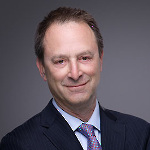Michael Barasch Interviewed About Teachers and Students Sickened by 9/11 Toxins
On July 7, attorney Michael Barasch joined iHeartRadio host Shelli Sonstein on Sonstein Sessions to discuss a little-known aspect of the post-9/11 health crisis: the long-term effects on teachers and students in lower Manhattan in 2001 and 2002. Also on hand were Michal Novemsky and Ronald Valenzuela, students at the time who have since developed 9/11-related cancers, and United Federation of Teachers executive Ellie Engler, also a 9/11 cancer survivor. A podcast of the full episode can be found here, but pertinent points of the discussion follow.
After the 9/11 terrorist attacks at the World Trade Center, 13 schools in the area were closed due to the impact of the toxic plume. Unfortunately, the U.S. Environmental Protection Agency, no doubt under pressure to help normalize lower Manhattan, certified the air was safe. So, Stuyvesant High School at 345 Chambers Street, just half a mile from Ground Zero, re-opened within one month, on October 9, 2001. The other 12 schools re-opened on Feb. 4, 2002. There were 5,505 students in schools that closed and another 1,200 in schools that didn’t close because they were considered outside the zone. In addition, hundreds of teachers were exposed.
Michal Novemsky was a 15-year-old student at Stuyvesant High School on September 11, 2001. She was evacuated along with the rest of the school as the towers collapsed. Fifteen years later, at age 30, she was diagnosed with breast cancer. Although she has a family history of the disease, the presence of such an aggressive form of breast cancer at such a young age is an indication that 9/11 toxicity played a role. Ronald Valenzuela was in his late 20s at the time of the attacks. Fifteen years later, he suffered internal bleeding he learned was due to colon cancer.
As Michael Barasch explained, the public is well aware that first responders have been suffering from 9/11 illnesses, but residents, workers, educators and students were also exposed to the toxic time bomb, and they are falling ill as well. Today, the WTC Health Program presumes that your illness is 9/11-related if you were in Manhattan, south of Canal Street, from the day of the attacks, September 11, 2001, to May 30, 2002, and you develop one of 68 listed cancers after 2005. When we realize there were about 30,000 people living south of Canal Street, and another 300,000 working there at the time, we begin to understand the true scope of the problem.
Unfortunately, too many eligible people who have become sick either do not connect their illness to 9/11 exposure or do not know they are eligible for free healthcare and compensation. The clock is ticking for them, because in three and a half years, the 9/11 fund closes. Therefore, anyone who suspects an illness may be 9/11-related must act now.
Barasch & McGarry represents a dozen clients who were students at the time of the terrorist attacks who have subsequently been diagnosed with cancer. If you have questions about your eligibility for Zadroga Act benefits, contact our experienced attorneys who have represented 9/11 survivors from the outset. Call [ln::phone] or contact our office online.

Leave a comment